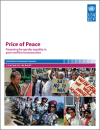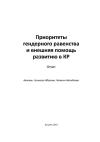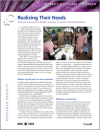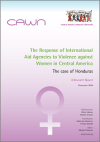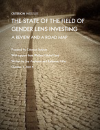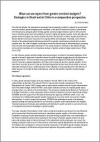FUNDAR 32
The main research question of this study To what extent do post-conflict reconstruction initiatives allocate resources to promote gender equality, address women's needs and involve women in decision-making around strategies and related resource allocations?
The publication decribes two main features:
1. Development in the Kyrgyz Republic, an institutional mechanism to promote
gender equality, responsible for the formulation of national programs and
strategies for gender equality and women's empowerment;
1. Development in the Kyrgyz Republic, an institutional mechanism to promote
gender equality, responsible for the formulation of national programs and
strategies for gender equality and women's empowerment;
Since 2004, 13 research projects supported in South Asia, sub-Saharan Africa, and Latin America by the Women's Rights and Citizenship program of Canada's International Development Research Centre (IDRC) have been exploring exactly how decentralization affects women's access to services, resources, a
This report presents the results of a research aimed at developing a diagnosis and an analysis of the opportunities that stem from introducing a gender approach in budgetary processes in some communes of Morocco.
This report focuses on the responses of international aid agencies working on violence against women (VAW) in Central America and, in particular, the situation in Honduras.
This report presents research on the costs of implementing South Africa's Domestic Violence Act (DVA), with a focus on quantifying missing personnel costs. It describes the methodology used in the research, the process required to obtain a protection order and the time taken at each step.
This report (2015) tells the history of the field of gender lens investing over the last five years and outlines a roadmap to the future, defining the critical areas of focus for resources and attention.
The publication produced by AWID provides the latest analysis on the funding trends impacting women’s rights organizing and the financial status of women’s organizations around the world.
What if budgets could help us revisit the shortcomings of mainstreaming by providing more concrete and measurable instruments? This article intends to contribute to this debate through some practical examples and a comparative analysis of gender sensitive budget experiences in Brazil and in Chile.
